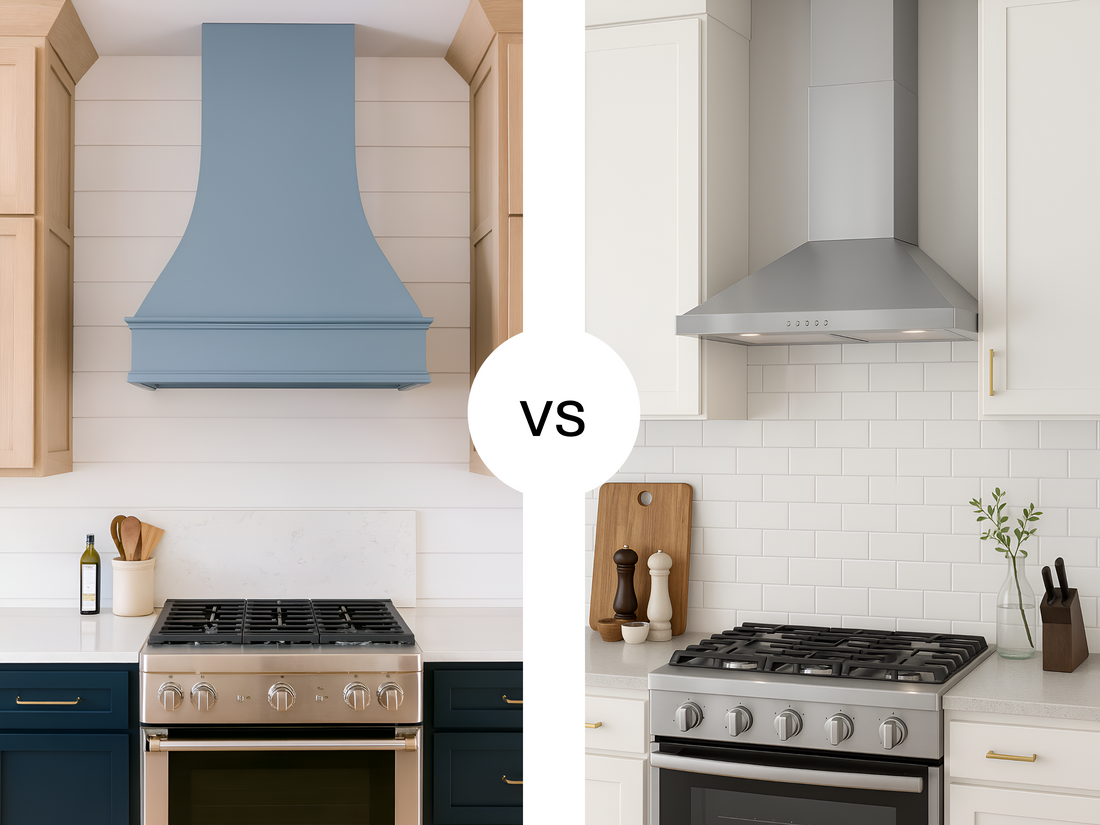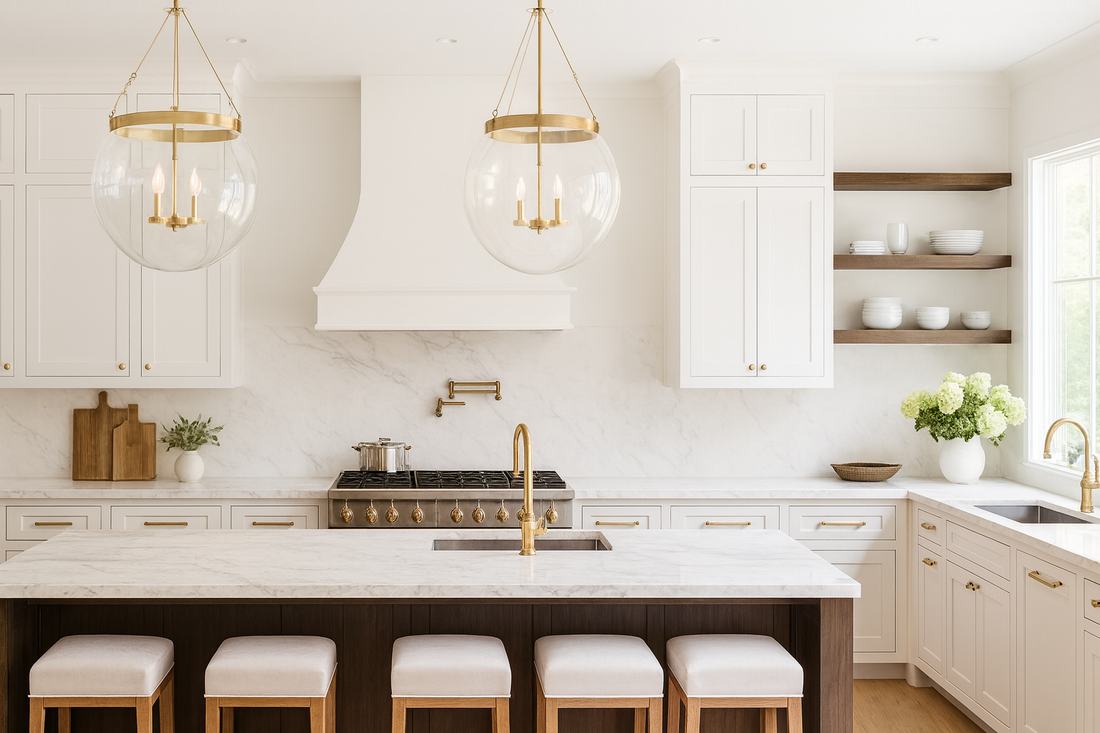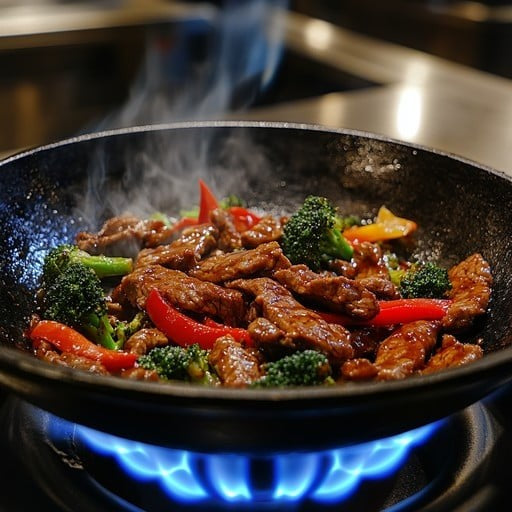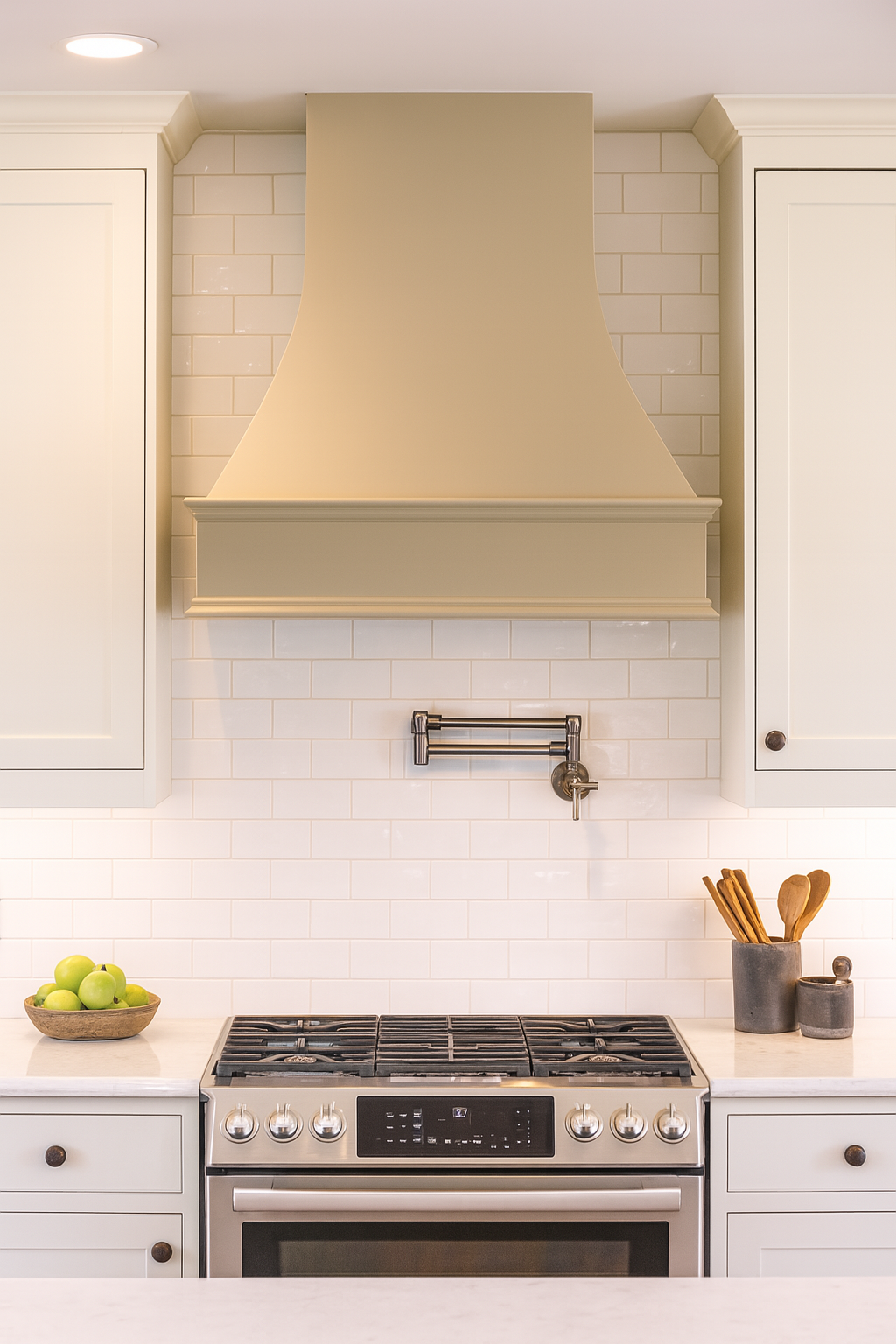Resources
Wood vs Stainless Steel Range Hoods: Which is Better?
When it comes to designing a kitchen, the range hood is often the unsung hero. It keeps the air clean, removes smoke and grease, and adds a focal point above your stove. But once you’ve decided you need one, the big question is: Should you choose a wood range hood or a stainless-steel range hood?
Learn moreWhen shopping for a kitchen range hood, what are the key factors to consider?
When shopping for a kitchen range hood, here are some key factors to consider
Learn moreHow many CFM do I need in my Kitchen Range Hood?
Great question — airflow capacity is measured in CFM (Cubic Feet per Minute), and it is one of the most important specifications when choosing a range hood. The right number depends on your stove type, kitchen size, and cooking style. Here’s how to figure it out: 🔹 General Guidelines Standard Electric or Gas Cooktops Rule of thumb: 100 CFM for every 10 inches of stove width. Example: 30" range → ~300 CFM 36" range → ~360 CFM High-BTU Gas Ranges / Professional-Style Stoves Rule of thumb: 1 CFM for every 100 BTUs of burner output. Example: A 60,000 BTU range → 600 CFM minimum. Heavy-duty ranges (with grills, griddles, wok burners) often require 900–1,200 CFM. Island Cooktops Require more power since they don’t have a wall to help capture smoke. Add 100–200 extra CFM compared to wall-mounted hoods. Kitchen Size Factor Another method: total kitchen volume ÷ 4 = recommended CFM. Example: 15 ft × 12 ft × 8 ft ceiling = 1,440 cubic ft. ÷ 4 = 360 CFM. Ductwork Long duct runs, multiple bends, or restrictions reduce efficiency. Add 25-40% more CFM for complex ductwork systems. 🔹 Important Notes More isn't always better - excessive CFM can create drafts and waste energy Check local building codes, as some areas have maximum CFM limits Higher CFM usually means more noise, so balance power with comfort Consider makeup air requirements for systems over 400 CFM in tightly sealed homes 🔹 Practical Cooking Habits Light cooking (boiling pasta, steaming veggies): 250–350 CFM Regular cooking (sautéing, simmering, some frying): 350–500 CFM Heavy cooking (frying, wok, grilling, searing meats): 600–900+ CFM 🔹 Things to Watch Out For Local codes: In some areas, hoods over 400–600 CFM require a make-up air system (to bring in fresh air when venting out large amounts). Noise: Higher CFM often means louder operation, unless the hood has multiple speed settings. ✅ Quick takeaway: Standard home kitchen: 300–500 CFM works for most people. High-BTU or frequent heavy cooking: 600–1,200 CFM. Island or pro-style setup: Err on the higher side. For more information: https://broan-nutone.com/en-ca/home/learn/blog/what-is-the-required-cfm-to-meet-your-needs
Learn more




